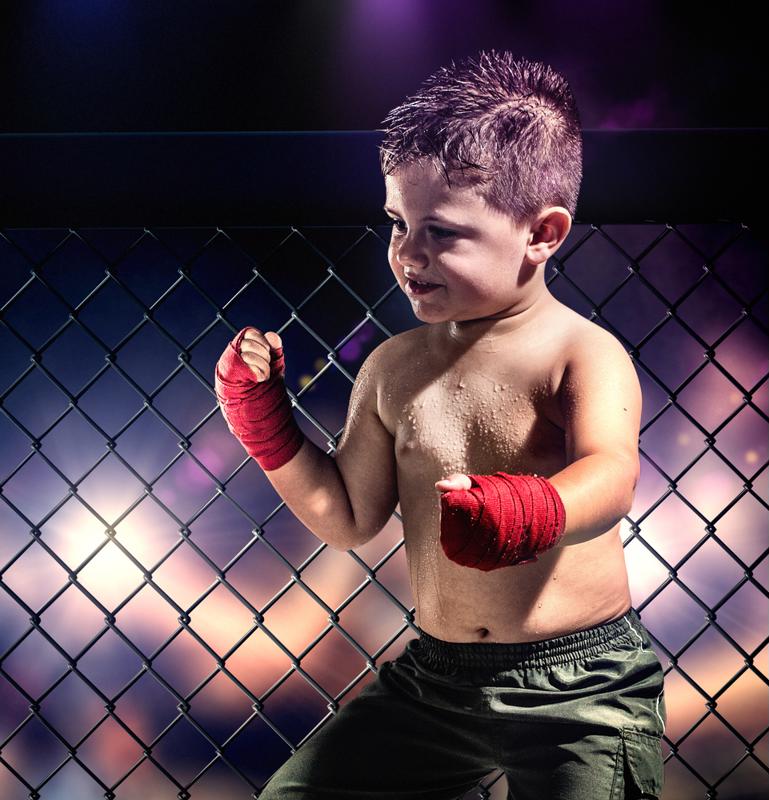If your darling angel has morphed into a mini-Mike Tyson before your eyes, take comfort in the fact that this is par for the parenting course. Unwanted behavior such as biting, kicking and hitting is common among young children of both genders. But even though it’s “normal,” it’s nevertheless unacceptable. Fortunately, there are steps you can take to prevent and redirect aggressive behavior so no one at home or school is knocked down for the count.

Why is my preschooler displaying aggressive behavior?
Many toddlers outgrow biting by the time they enter preschool, but some 3- and 4-year-olds continue to bite others occasionally. The Early Childhood and Parenting Collaborative (ECAP) reports that preschoolers generally bite for the following reasons:
- To exert control over a situation.
- For attention.
- As a self-defense strategy.
- Out of extreme frustration and anger.
According to the ECAP, frequent biting at this age could indicate more serious concerns such as behavioral issues or a sensory processing disorder. If you suspect either, it’s best to consult your pediatrician.
Hitting, kicking and other forms of physically aggressive behavior (such as pushing a younger sibling to the floor) can also arise from communication shortfalls. For example, let’s pretend a 3-year-old doesn’t want her little brother to touch her cookie, but she can’t form the words quickly enough and his hand is inching closer and closer. Fearing he’ll snatch the treat away, she slaps him.
Preschoolers are little humans with big emotions. At times they can experience difficulty coping with uncomfortable feelings like being tired, hungry or anxious, as stated by Vanderbilt University’s Center on the Social and Emotional Foundations for Early Learning (CSEFEL). Rather than tell an adult how they’re feeling, kids may resort to lashing out physically as a means by which to express themselves.
How to prevent and redirect aggressive behavior
Prevention is your first goal. It’s important to set firm limits and to enforce them consistently. Doing so will help your preschooler develop self-control. The more kids are able to self-regulate, the less likely they are to lash out aggressively.
You’ll also want to discuss appropriate and non-appropriate behavior. These conversations should happen when your child is happy, calm and receptive to listening to what you have to say. When you lecture immediately following an incident, you’re likely to find that your words fall on deaf ears. Reading books about biting is another smart idea as it provides an opportunity to chat about what the characters might be feeling. The CSEFEL suggests “Teeth Are Not for Biting” by Elizabeth Verdick and “No Biting” by Karen Katz.
It might also prove helpful to be physically affectionate with your child on a regular basis. Otherwise, your preschooler might feel rejected and become angry and primed to lash out.
“The more kids are able to self-regulate, the less likely they are to lash out.”
Some parents react to being bitten or hit by biting or hitting their preschooler back. The idea behind this is that it shows the child that being bitten or hit hurts, thus deterring the behavior. However, according to the ECAP, this is the incorrect approach because it conveys the message that violence is acceptable. Additionally, overreacting to the incident and rushing to punish the child isn’t recommended. Despite your best efforts to prevent aggression, some children might continue to bite, kick or hit others. It’s important to plan ahead for how you’ll address these incidents.
Instead, try the following gentle responses:
- Separate: The first thing you should do is separate the aggressor and the victim. Focus on ensuring the victim is okay.
- Stay calm: The CSEFEL says parents should say calmly but firmly, “No biting. Biting Hurts.” Scolding, screaming or resorting to physical punishment isn’t an effective way to reduce or eliminate the problem. It’s more effective to apologize to the hurt child, which models taking responsibility and empathy.
- Listen: Often times the aggressor ends up in tears following an incident of violence. While you may be inclined to tell your child to calm down, listening and allowing him or her the time to cry and vent frustrations can help your preschooler learn to work things out on his or her own, according to Hand in Hand.
- Role play: After your child has calmed down, you should discuss the incident and role play. It’s important to practice appropriate responses to frustration such as walking away, telling an adult or saying, “Stop.”
Be patient. Change doesn’t happen overnight, and it can take time for preschoolers to develop skills necessary to manage their uncomfortable feelings. Stay supportive and stay the course.
